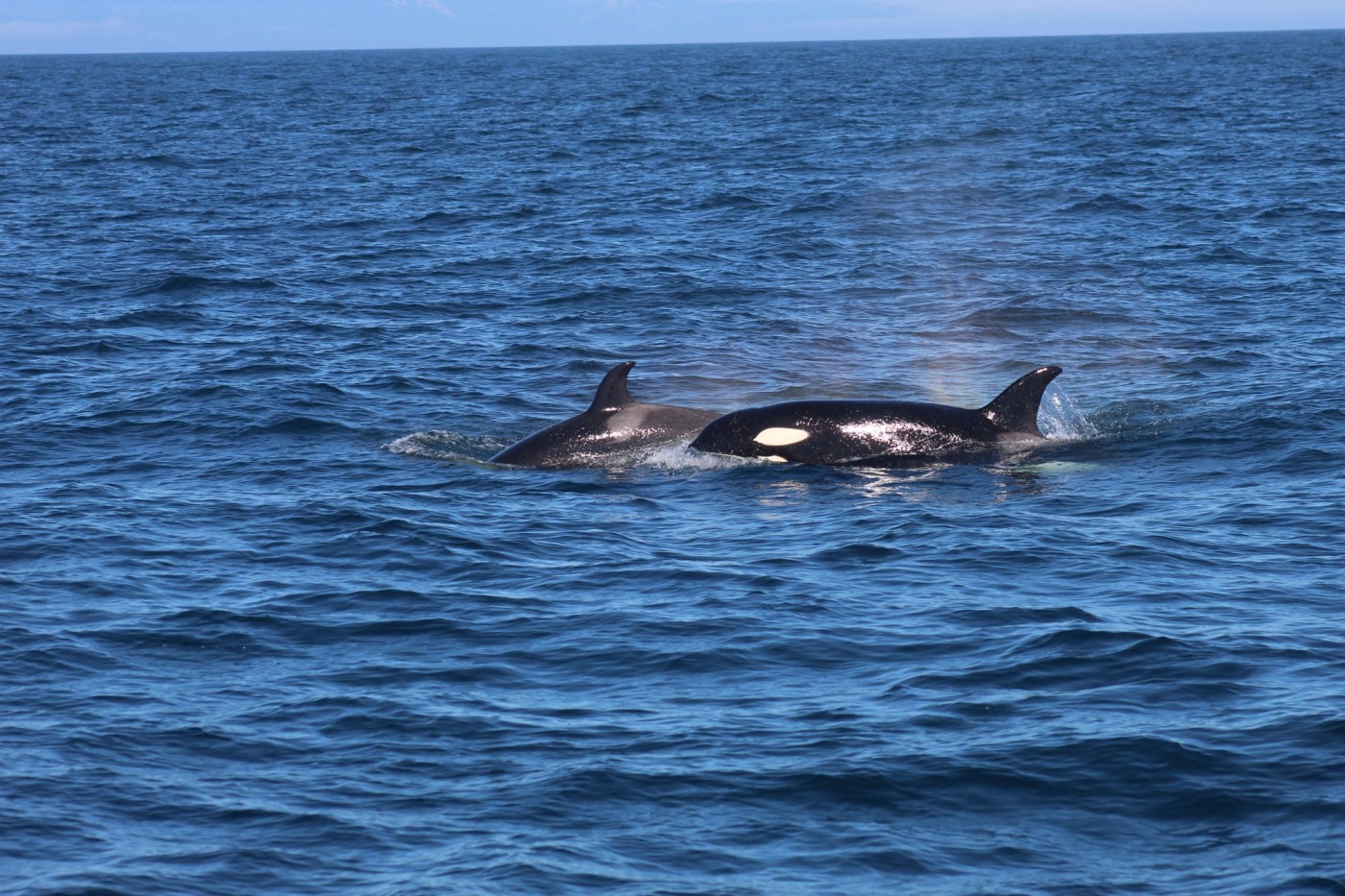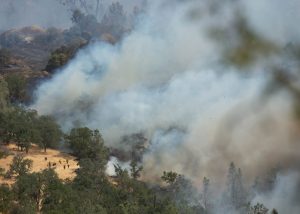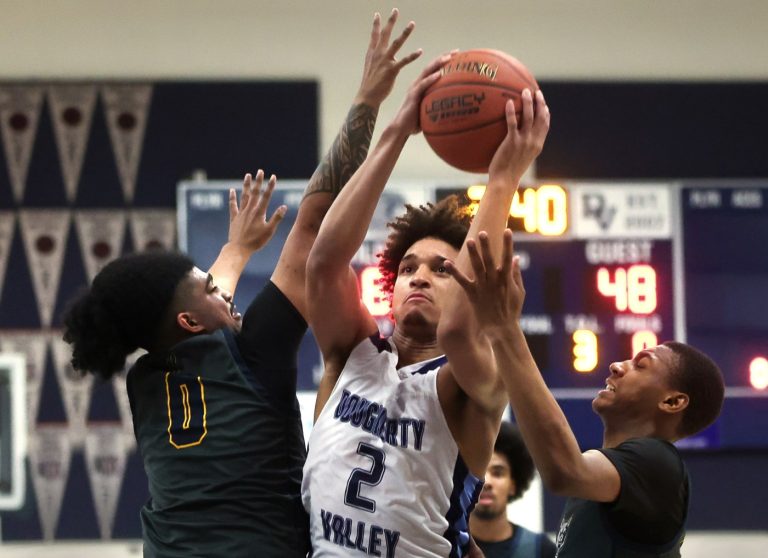A group of biologists working at the Farallon Islands got to see an extremely rare event: whales hunting other whales.
The incident happened at about 8:30 a.m. Aug. 22, when scientists with Point Blue Conservation Science were about to begin a training session on using a crane to get a boat in and out of the water. They noticed some humpback whales blowing water to the east.
Jim Tietz, a biologist, said he used his binoculars to get a better look and discovered something even more incredible — a pod of about seven humpbacks being pursued by approximately 15 orcas.
“This was a once-in-a-lifetime event that we witnessed,” Tietz said. “It was an amazing feeling to be present for that.”
Point Blue Conservation Science is a nonprofit organization that has partnered with the U.S. Fish and Wildlife Service, which manages the Farallon Islands National Wildlife Refuge. Biologists with the nonprofit monitor various wildlife populations.
Tietz has been with the program for 23 years. He said he spends four months a year at the archipelago, but this is the first time he saw such a spectacle.
“We were all very excited about this,” Tietz said.
Still, the training had to continue. Knowing how rare the event was, however, another biologist moved to a high point during the lunch break to keep documenting the whales, Tietz said. A live webcam — broadcast by the California Academy of Sciences — was pointed toward the action.
“I was like, yeah, keep documenting because this is super rare,” Tietz said.
A whale exposes its flipper near the Farallon Islands off the coast of San Francisco on Thursday, Aug. 22, 2024. (Mackenzie Cahill/USFWS Media)
The whales remained in the area for about four hours and then began to move north. Later in the day, the pod of orcas split into two groups and began pursuing a single humpback. After eight hours, the whales traveled out of range.
Nancy Black, director of the nonprofit California Killer Whale Project, isn’t so sure that the orcas spotted at the Farallon Islands were hunting the humpbacks. She said there was no clear blood or wounds on the whales, but noted that she was watching from the live webcam.
Black has been studying killer whales for about 30 years. While they are the natural predators of humpbacks, this population of orcas, known as the West Coast transient population, has never gone after one, she said. In fact, it is more common to see humpbacks harass orcas, usually in response to the orcas going after prey, which can include whale calves.
Black said the humpbacks might have been reacting to the orcas killing something earlier in the day. The biologists on the islands, who were eventually able to get on a boat for a closer look, didn’t see anything dead in the water.
“It is unusual,” Black said. “Since we’ve never seen that before, it could be something new. I don’t really have a good explanation.”
In early August, the California Academy of Sciences announced that a deceased young male humpback whale was found ashore at Fort Funston in the Golden Gate National Recreation Area. The likely cause of death was orca predation.
“These are two data points within a short period of time, so it’s possible that these killer whales have learned these behaviors,” Tietz said.
In the past three decades, the population of humpbacks off the California coast has grown from 400 to more than 5,000. With more whales, there could be an increased risk for whale-versus-whale conflict, Black said.
“Things we haven’t seen before are certainly possible,” Black said. “It takes a long time to learn about the things they can do. It’s certainly possible a new behavior can come up.”
Related Articles
Thar they blow! An abundance of whales near Bay Area beaches
Entangled humpback seen of California coast
Lots of gray whales are swimming under the Golden Gate Bridge into San Francisco Bay. Why?
Gerry McChesney, the manager of Farallon Islands National Wildlife Refuge, was able to board a boat to get a closer view of the action. McChesney said it appeared like a hunt or pursuit, and he saw an orca breaching on top of a humpback, a technique they use to kill whale calves. When the whales broke into two groups, the boat checked in on both parties.
At one point, McChesney said, it looked like the humpbacks were using the boat as a barrier between the orcas. Later, the boat found the sole humpback being pursued by a group of orcas.
“Every time the humpback would sound, like go down under, the orcas would go down with it,” McChesney said. “Our impression is that this humpback was having trouble breaking free. It seemed pretty stressed, but who knows what was going on under the water?”
“Who knows, our impression is that there was a hunt going on but maybe that’s a false impression,” McChesney said. “I still think they were pursuing at least that single humpback later in the day. It’s anybody’s guess what was really going on.”
“It was really exciting and amazing to watch, and knowing you’re watching such a rare event, and being so into this stuff, it was really, really exciting,” he said.












